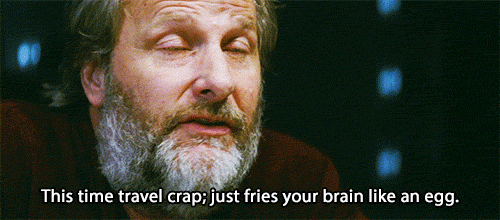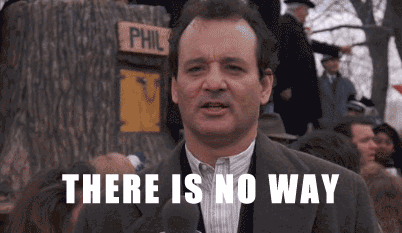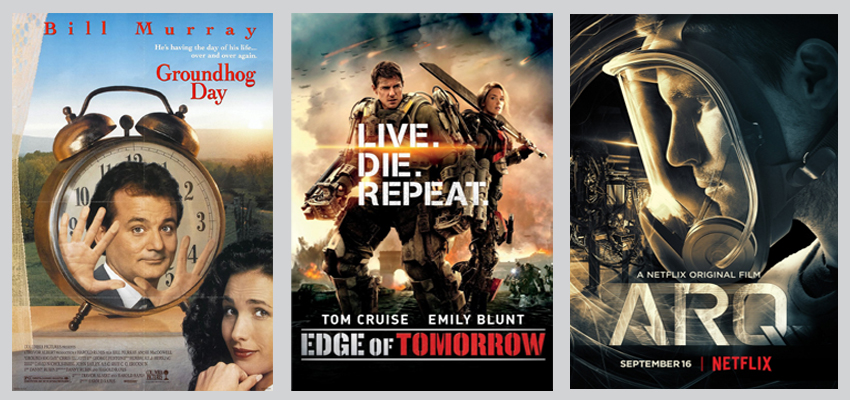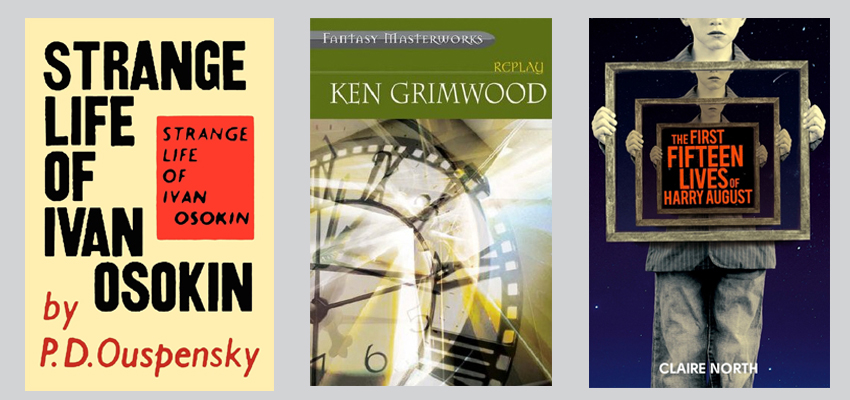
It’s familiar; you realise this has happened before. Everything has happened exactly like this before, and only you seem to know and realise this. You can change certain things, you recognize minor variations, but the overall sequence of events seem to follow a set pattern, till… BAM!
You realise this has happened before. Everything happening has occurred before. And only you seem to know what is going to happen. You try to change certain things, you recognize minor alterations, but the overall flow of events seem to follow a set sequence. You try to use this knowledge to manipulate events and people, till….BAM!
You, dear friend, if you find yourself in the situation(s) described above, are officially stuck in a Time Loop. Congratulations. For you will get the second chance you always wanted, and a third, and a fourth, and a fifth…
And commiserations too. Because you don’t know what the end game is, how long this loop will last. And you know what they say about every day being exactly the same? This is it.
Confused?
I don’t blame you. I was.
So let’s take this one from the top.

We saw how timey-wimey stuff is, with its own share of fascinating weirdness, when we looked at the Bootstrap Paradox, also known as a Causal Loop, where the cause is its own effect and vice versa. Then there are Time Loops, where you, the subject or protagonist, are caught in a series of events that happen over a limited period of time – hence Time Loop – that ‘resets’ itself to the starting point, when the sequence starts all over again. Doctor Who fans will diagnose this condition as Chronic Hysteresis, where the occupants experience the same events in endless repetition.
The Time Loop could be as short as a few minutes, an hour or as long as a lifetime, as we shall see. You will have memories of all previous loops and will be in total control (free will?) of your actions and are free to use your knowledge to manipulate how things will pan out, and to tweak them to your desired outcome – of course before the ‘reset’ point, which could be anything from the passing of day to the clock reaching a certain time or, as is usually the case, your death. Don’t worry, you’re not really dead. You will be alive when the cycle starts all over again.
The only way out of this cycle of repetition is the fulfilment of one or more conditions, after which you will finally be out of the loop and life will carry on from there and time will flow ‘as expected’. The only catch is that oftentimes you may not be aware of what condition has to be met or what outcome has to be fulfilled. If all this still sounds a bit confusing, it won’t soon, once we look at the stories of a few people who’ve been stuck in a Time Loop, also known popularly as a ‘Groundhog Day’ Loop, because of well, Groundhog Day.
Harold Ramis’ 1993 classic starring Bill Murray, Groundhog Day broke new commercially viable ground when it used a sci-fi trope, the Time Loop, to tell a part-comedy, part-fantasy, all-enjoyable story about a cynical weatherman stuck forever in a certain day, February 2, starring Murray, Andie MacDowell and a sleepy Punxsutawney Phil, the eponymous groundhog. Murray plays a big-city weatherman who is forced by his TV station to go to a small town to cover an annual festival called Groundhog Day, when the famous groundhog tells the townspeople if spring will arrive early. He wakes up that day, February 2, reports on the proceedings, and somehow makes his way through the rest of February 2 waiting for the next day, when he will finally return home. He goes to sleep and wakes up the next day to find that it is again February 2. And the next day, and the day after that and the day after that and…
No early spring for Bill Murray, who’s by this this time realized he’s doomed to repeat Groundhog Day – he’s stuck in a Time Loop.

Slowly he realizes that he can actually do some good and learn stuff while he’s at it. He starts making changes, saving people with his knowledge of exactly what is going to happen – and where – in Pungsatawny on Febraury 2. He learns to play the piano, becomes an expert ice sculptor, a friend and many other things, till one day he wakes up and it is finally February 3! The next day.
Well, that’s the Time Loop for you. In Bill Murray’s case, the Time Loop lasted 24 hours, or a day, and ‘reset’ when he woke up. Conservative estimates put the time Bill Murray spent in February 2 at anywhere between 30 and 40 years of ‘normal time’.
One more Time Loop? You got it! Let’s look at Edge of Tomorrow, a science fiction film starring Tom Cruise and Emily Blunt based on a Japanese military sci-fi novel, All You Need is Kill, written by Hiroshi Sakurazaka and illustrated by Yoshitoshi Abe. Set in a future Earth, Tom Cruise plays Bill Cage, a slick PR man with no combat experience but who is anyways sent to fight on the frontlines against aliens who have invaded our planet. All goes well till he dies, only to find himself back at the beginning of the day, only to relive the same events all over again. Unlike Bill Murray in Groundhog day, who could just go to sleep and wake up to a brand new same-day, Bill Cage has to die to ‘reset’ the loop.
Of course he has to do a lot more to escape the loop, which he finally does, after many tries and reliving the loop, only a few of which am sure are shown in the movie, which would otherwise have a runtime of a few years, if not decades. But with each passing day, Cage gets better at combat, learns more about the aliens and how to defeat them, and of course comes to know Emily Blunt a lot better and vice versa. Moral of the story: Do something different each day, even if it is the same day!
To say that a film or story has a Time Loop is in itself a spoiler, but the fun part is what they do, what condition they each meet to escape their respective Time Loops, and how they go about it. I leave it to you to find out. What does Lola have to do, to stop running? Or what does Robbie ‘Firestorm’ Amell have to do, in the just-released Netflix original movie ARQ, where Amell plays an engineer whose invention, a power source, bends space, time and space-time causing him to be trapped in, you guessed it, a Time Loop?

A Time Loop is also known as a Temporal Loop because of the limited loop in the arrow of time; it is often confused with the Causal Loop (or the Bootstrap Paradox). But unlike a Causal Loop, where events never change and there is no beginning or end, in a Time Loop events within the loop can change and reality always ‘resets’ to its default setting at the beginning of every single loop. Also, people stuck in a Time Loop have all memories of previous loops.
For further investigations into the concept of a Time Loop — what it can do to and for a person stuck in one, what they can do and how they can go about it, here are three books that deal with the concept (not including Hiroshi Sakurazaka’s All You Need Is Kill). Ouspensky’s book is a little high on the philosophy quotient, written as it was to illustrate Friedrich Nietzsche’s Eternal Recurrence concept in the guise of a novel. A classic of the genre, Ken Grimwood’s Replay, won the World Fantasy Award in 1988 and has been cited by Harold Ramis as a huge influence on Groundhog Day. Replay recounts the many lives of journalist Jeff Winston who, aged 43, dies of a heart attack in 1988 only to wake up again 25 years ago — in 1963 in his 18-year-old body. He replays his life, with memories intact, and despite his best efforts at preventing it, dies again of a heart attack in 1988, only to immediately return to 1963 as an 18-year-old student.

Rounding off this short list is a modern classic, Claire North’s gripping 2014 novel The First Fifteen Lives of Harry August, which won the John W. Campbell Memorial Award for Best Science Fiction Novel and was nominated for the Arthur C. Clarke Award in the same category. Described as ‘Groundhog Day on Red Bull’, the novel tells the story of an ‘Ouroboran’ or ‘Kalachakra’ who is destined to be reborn again and again, the titular Harry August. No matter what he does or the decisions he makes, when death comes, Harry always returns to where he began, a child with all the knowledge of a life he has already lived a dozen times before. Nothing ever (really) changes. Till he’s on his deathbed at the end of his 11th life, when a young girl – a fellow Kalachakra – comes to him bearing a message from the future for him to take back in time to his next birth. And then it gets even more interesting in a race against ‘time’, across lifetimes, to catch an Ouroboran killer. BAM!
It’s familiar, you realise this has happened before. But ‘this time’ you know for sure you’re stuck in a Time Loop and because you’ve seen all the movies and read them books, you have a fair idea what to do and expect. On that note, I wish you a very happy weekend, and welcome your comments and suggestions. Let us know what you think, in the comments section below or tweet to us with #NWWonFD. Live long and prosper!
Subscribe to FactorDaily
Our daily brief keeps thousands of readers ahead of the curve. More signals, less noise.
To get more stories like this on email, click here and subscribe to our daily brief.
Update (Oct 5, 2016; 5.20 pm IST): An earlier version of the story named Jeff Bridges as the actor in the movie Looper. The name of the actor is actually Jeff Daniels and the photo caption has been updated to reflect this. Disclosure: FactorDaily is owned by SourceCode Media, which counts Accel Partners, Blume Ventures and Vijay Shekhar Sharma among its investors. Accel Partners is an early investor in Flipkart. Vijay Shekhar Sharma is the founder of Paytm. None of FactorDaily’s investors have any influence on its reporting about India’s technology and startup ecosystem.








